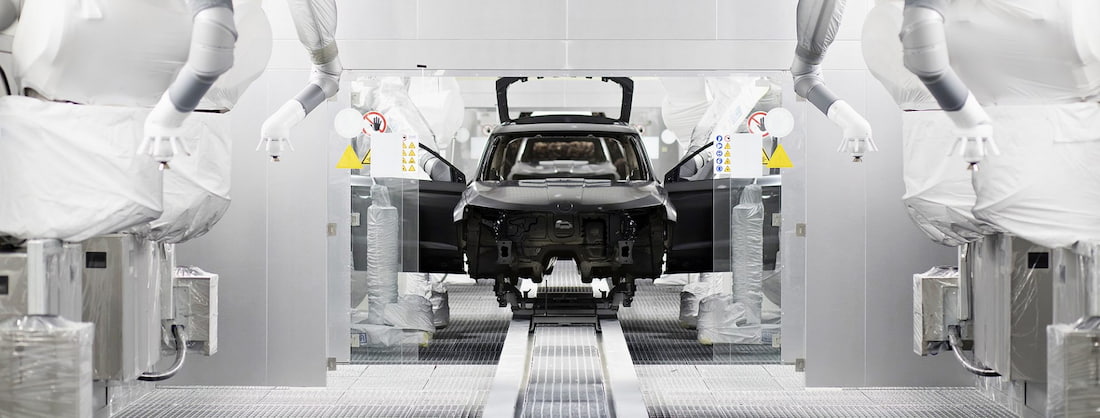The automotive industry is evolving at a fast pace. As more and more traditional manufacturers shift to EV production and brand new players enter the market, it’s important to keep a cool head. By asking the right questions in time you can ensure that your team has the equipment they need to manoeuvre new vehicles safely and efficiently in a changing production environment.
Before you start producing a new vehicle model, you need to evaluate how it will impact the safety and logistics around your assembly line. Otherwise, you risk running into unexpected problems when transporting the new vehicles around your facilities. And as always, the best way to solve a problem is to prevent it from occurring in the first place. Especially when the solution could involve ordering new equipment that can’t be delivered in a hurry.
The following five questions will help you determine whether your existing vehicle moving solution will still be sufficient as you introduce new vehicles to your assembly line or if you’ll need to upgrade.
1. Will the technology of the vehicle change?
A shift from producing combustion engine vehicles to electric ones typically involves restructuring the entire assembly line. It also requires a re-evaluation of your vehicle moving equipment to accommodate the specific challenges of moving electric cars quickly and easily in a plant.
But seemingly minor changes to existing car models can also have a big impact on how you’re able to move a car from the assembly line. A common example is when cable parking brakes or transmission linkages are replaced with battery-run electronic ones. This can cause situations where simply driving the car off—or putting it in neutral to roll it off—isn’t an option. Instead, you’ll need to upgrade your equipment to enable moving the vehicle with all four wheels locked.
While we’re on the topic—don’t miss the interview where Stringo’s CTO explains the increased demand for four-wheel vehicle movers and how the industry is adapting.
2. Will the physical dimensions of the vehicle change?
When it comes to vehicle moving, size definitely matters. Does your new vehicle model differ in any way from the ones previously manufactured in your plant in relation to weight, wheelbase, tyre dimensions, and ground clearance? If so, you should consult your vehicle mover supplier to determine whether your existing equipment is still fit for the job, or if you need to modify or replace it.
3. Will the production environment change?
When re-organising the production line—or setting up an entirely new one—one crucial factor to take into account is the distances that vehicles may need to be transported. For example, in most automotive manufacturing plants, the repair area is located pretty close to the end of the assembly line. This enables staff to quickly take non-starters aside to have them examined.
In some cases, however (perhaps after a major change to accommodate a new vehicle model), the cars need to be moved quite a long way. To avoid unnecessary production halts due to battery recharge, make sure your vehicle moving equipment has the capacity to support the new requirements of your facility.
One aspect of the production environment that rarely changes is the conveyor. When it does happen though, it can impact your vehicle mover’s ability to safely and efficiently pull a car from the end of line. Therefore, you should always consult your vehicle mover provider if you plan to replace your conveyor system.
4. How are the changes affecting employee safety?
All of the changes mentioned above can have a significant impact on your employees’ safety. Make sure to review your safety routines and equipment whenever there are important updates in vehicle specifications or production environment—from heavier cars to alterations of the line of sight. Consider upgrading your vehicle moving solution with additional safety features such as extra foot guards, rollover protections, or sound and light signals that alert surrounding staff when vehicles are being moved.able to museums.”
5.Can my existing vehicle moving solution handle the changes?
If you and your team are using a Stringo to ensure safe and efficient vehicle moving, we strongly recommend you to consult one of our experts whenever you plan to make any changes in your vehicle production. They’re happy to visit your facilities and go over the production process together with you in order to validate that your current equipment is still adequate or advise you on any necessary changes.
For example, the Stringo DuoMover quickly turns a regular Stringo into a four-wheel vehicle mover, while a Stringo S5 is capable of transporting vehicles weighing up to 5,000 kg. And if you have particular needs, our engineers can always create a customised solution.
Any questions after reading this article? Don’t hesitate to get in touch!





